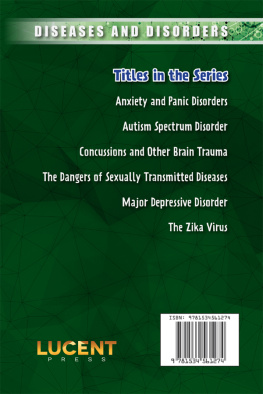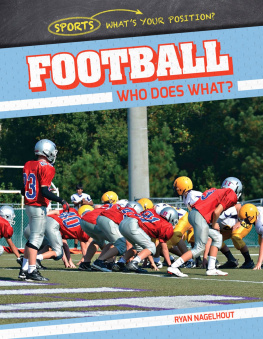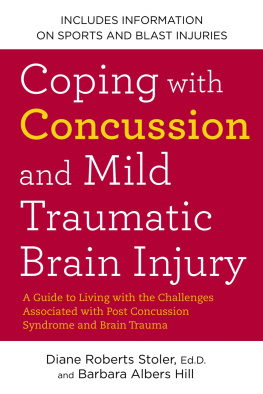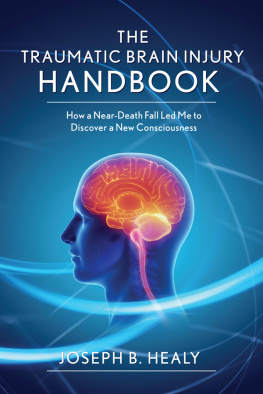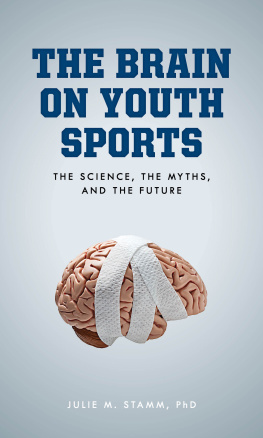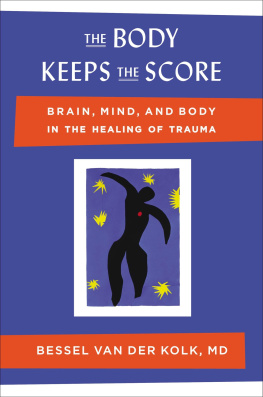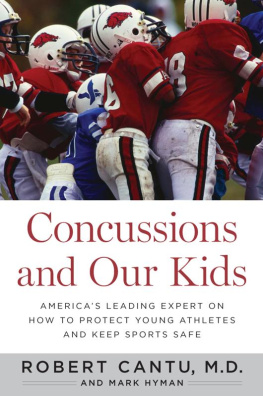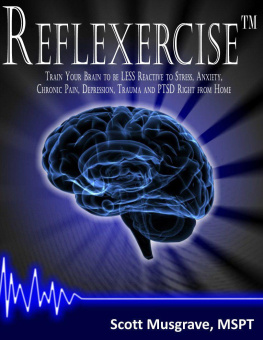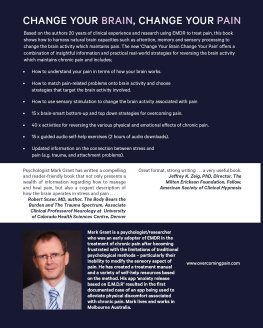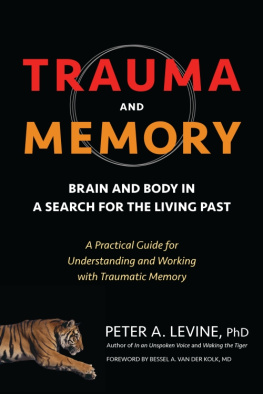Published in 2018 by
Lucent Press, an Imprint of Greenhaven Publishing LLC
353 3rd Avenue
Suite 255
New York, NY 10010
Copyright 2018 Greenhaven Press, a part of Gale, Cengage Learning
Gale and Greenhaven Press are registered trademarks used herein under license.
All new materials copyright 2018 Lucent Press, an Imprint of Greenhaven Publishing LLC.
All rights reserved. No part of this book may be reproduced in any form without permission in writing from the publisher, except by a reviewer.
Designer: Andrea Davison-Bartolotta
Editor: Jennifer Lombardo
Cataloging-in-Publication Data
Names: Nagelhout, Ryan.
Title: Concussions and other brain trauma / Ryan Nagelhout.
Description: New York : Lucent Press, 2018. | Series: Diseases and disorders | Includes index.
Identifiers: ISBN 9781534561274 (library bound) | ISBN 9781534561281 (ebook)
Subjects: LCSH: Brain--Concussion--Juvenile literature. | Head--Wounds and injuries--Juvenile literature.
Classification: LCC RC394.C7 N265 2018 | DDC 617.481044--dc23
Printed in the United States of America
CPSIA compliance information: Batch #BS17KL: For further information contact Greenhaven Publishing LLC, New York, New York at 1-844-317-7404.
Please visit our website, www.greenhavenpublishing.com. For a free color catalog of all our high-quality books, call toll free 1-844-317-7404 or fax 1-844-317-7405.
CONTENTS
FOREWORD
INTRODUCTION
Saving the Brain
CHAPTER ONE
When Brains Go Bad
CHAPTER TWO
How Brains Get Hurt
CHAPTER THREE
After the Trauma
CHAPTER FOUR
Prevention and Treatment
CHAPTER FIVE
The Rise and Fall of TBI
NOTES
GLOSSARY
ORGANIZATIONS TO CONTACT
FOR MORE INFORMATION
INDEX
PICTURE CREDITS
ABOUT THE AUTHOR
FOREWORD
I llness is an unfortunate part of life, and it is one that is often misunderstood. Thanks to advances in science and technology, people have been aware for many years that diseases such as the flu, pneumonia, and chicken pox are caused by viruses and bacteria. These diseases all cause physical symptoms that people can see and understand, and many people have dealt with these diseases themselves. However, sometimes diseases that were previously unknown in most of the world turn into epidemics and spread across the globe. Without an awareness of the method by which these diseases are spreadthrough the air, through human waste or fluids, through sexual contact, or by some other methodpeople cannot take the proper precautions to prevent further contamination. Panic often accompanies epidemics as a result of this lack of knowledge.
Knowledge is power in the case of mental disorders, as well. Mental disorders are just as common as physical disorders, but due to a lack of awareness among the general public, they are often stigmatized. Scientists have studied them for years and have found that they are generally caused by hormonal imbalances in the brain, but they have not yet determined with certainty what causes those imbalances or how to fix them. Because even mild mental illness is stigmatized in Western society, many people prefer not to talk about it.
Chronic pain disorders are also not well understoodeven by researchersand do not yet have foolproof treatments. People who have a mental disorder or a disease or disorder that causes them to feel chronic pain can be the target of uninformed opinions. People who do not have these disorders sometimes struggle to understand how difficult it can be to deal with the symptoms. These disorders are often termed invisible illnesses because no one can see the symptoms; this leads many people to doubt that they exist or are serious problems. Additionally, people who have an undiagnosed disorder may understand that they are experiencing the world in a different way than their peers, but they have no one to turn to for answers.
Misinformation about all kinds of ailments is often spread through personal anecdotes, social media, and even news sources.This series aims to present accurate information about both physical and mental conditions so young adults will have a better understanding of them. Each volume discusses the symptoms of a particular disease or disorder, ways it is currently being treated, and the research that is being done to understand it further. Advice for people who may be suffering from a disorder is included, as well as information for their loved ones about how best to support them.
With fully cited quotes, a list of recommended books and websites for further research, and informational charts, this series provides young adults with a factual introduction to common illnesses. By learning more about these ailments, they will be better able to prevent the spread of contagious diseases, show compassion to people who are dealing with invisible illnesses, and take charge of their own health.
INTRODUCTION
SAVING THE BRAIN
T iaina Baul Seau Jr., better known as Junior Seau, killed himself on May 2, 2012. Two years before he died, Seau retired from the National Football League (NFL). He played 13 of his 20 pro seasons for the San Diego Chargers. The linebacker was a fan favorite in San Diego. He appeared on childrens television shows and had his own restaurant in the city. Seau was known for big hits on quarterbacks and anyone carrying the ball. He had 1,522 tackles and 56.5 sacks in his career.
Two years after leaving that behind, the 43-year-old shot himself in the heart. He died instantly, leaving behind four children. However, he also left his damaged brain behind for scientists to study.
Sports are just one reason more than 1.7 million Americans sustain traumatic brain injuries each year. Motor vehicle crashes, falls, accidents, and other acts of violence all add up to unseen injuries, from concussions to foreign objects such as shards of glass or metal penetrating the skull and harming brain tissue. The more serious the injury, the more likely it will cause permanent brain damage, which can impair the victims ability to speak, think clearly, or otherwise function normally. In the most traumatic cases, head injuries can be deadly.
The risk of traumatic brain injury, or TBI, is particularly high among young people because this age group is more likely to engage in activities and behaviors that expose them to head injuries. Adolescent boys, for example, are prone to TBI because they often ride bicycles or motorbikes without helmets or participate in contact sports. Many young people do not even perceive the risks of head injuries when performing wild stunts or playing a hard-hitting football game.
George Zitnay, a neuropsychologist who treats people with mental illnesses that result from brain injuries, called TBI an invisible epidemic
Junior Seau played 20 NFL seasons with three teams before committing suicide at age 43.
The Gradual Death
It has been decades since a football player has died on the field. However, few sports have highlighted the growing understanding of traumatic brain injuries as much as football. Seau has added to a growing list of former football players who saw their lives end early. When the brains of these athletes are studied, the signs of damage are staggering.

